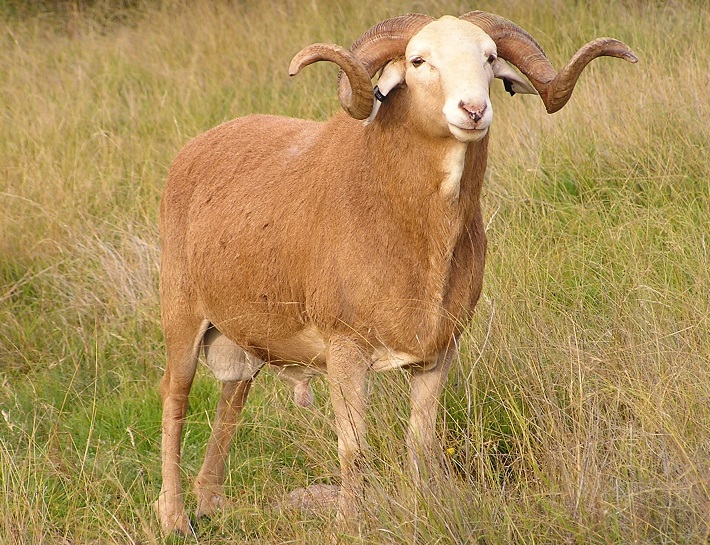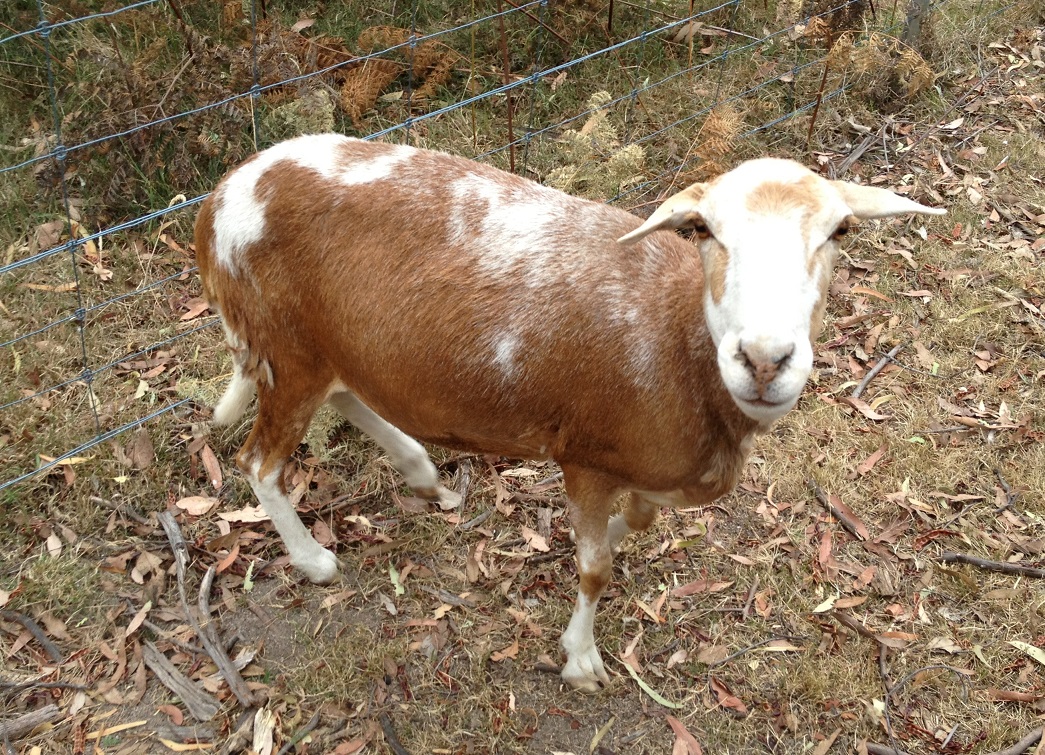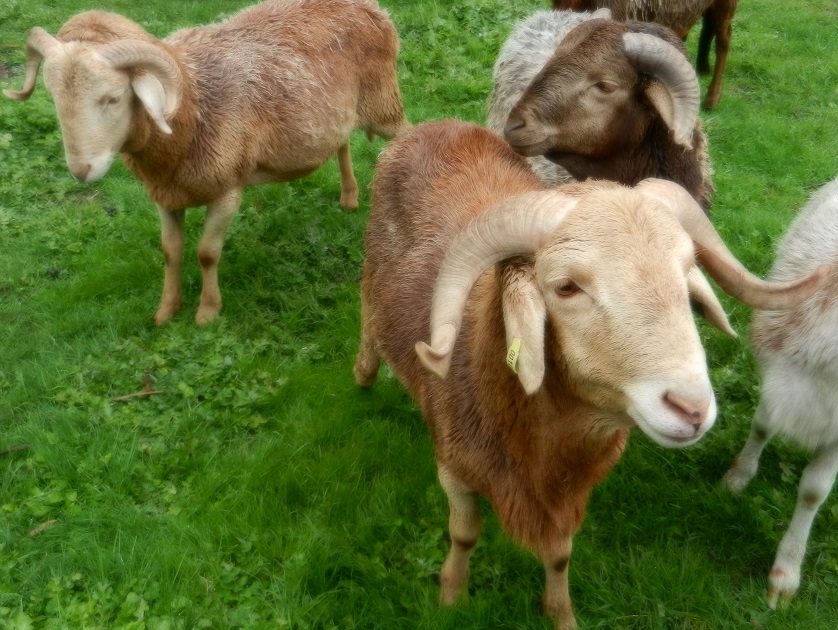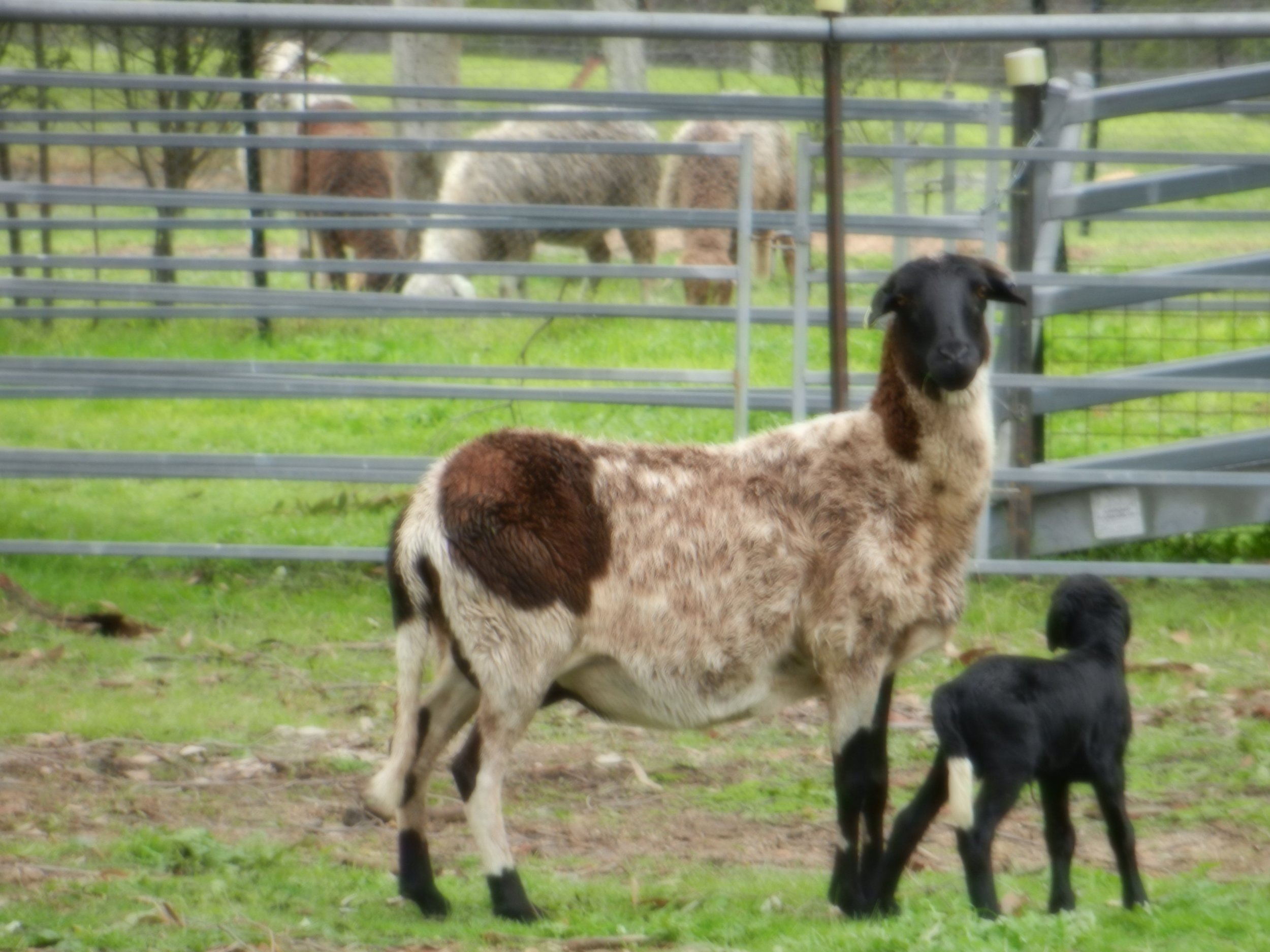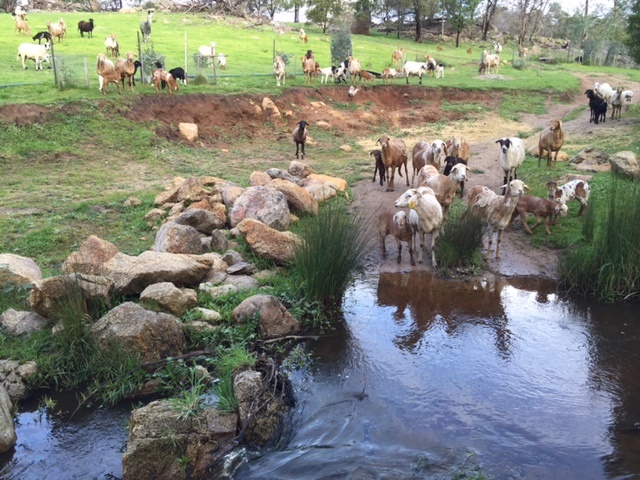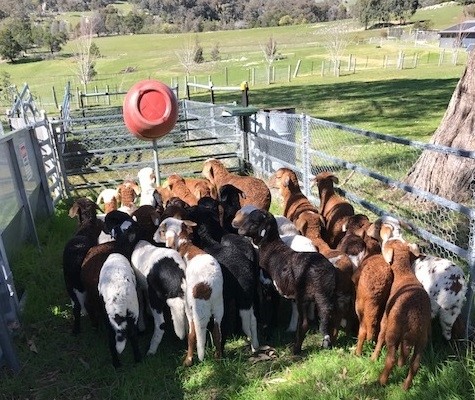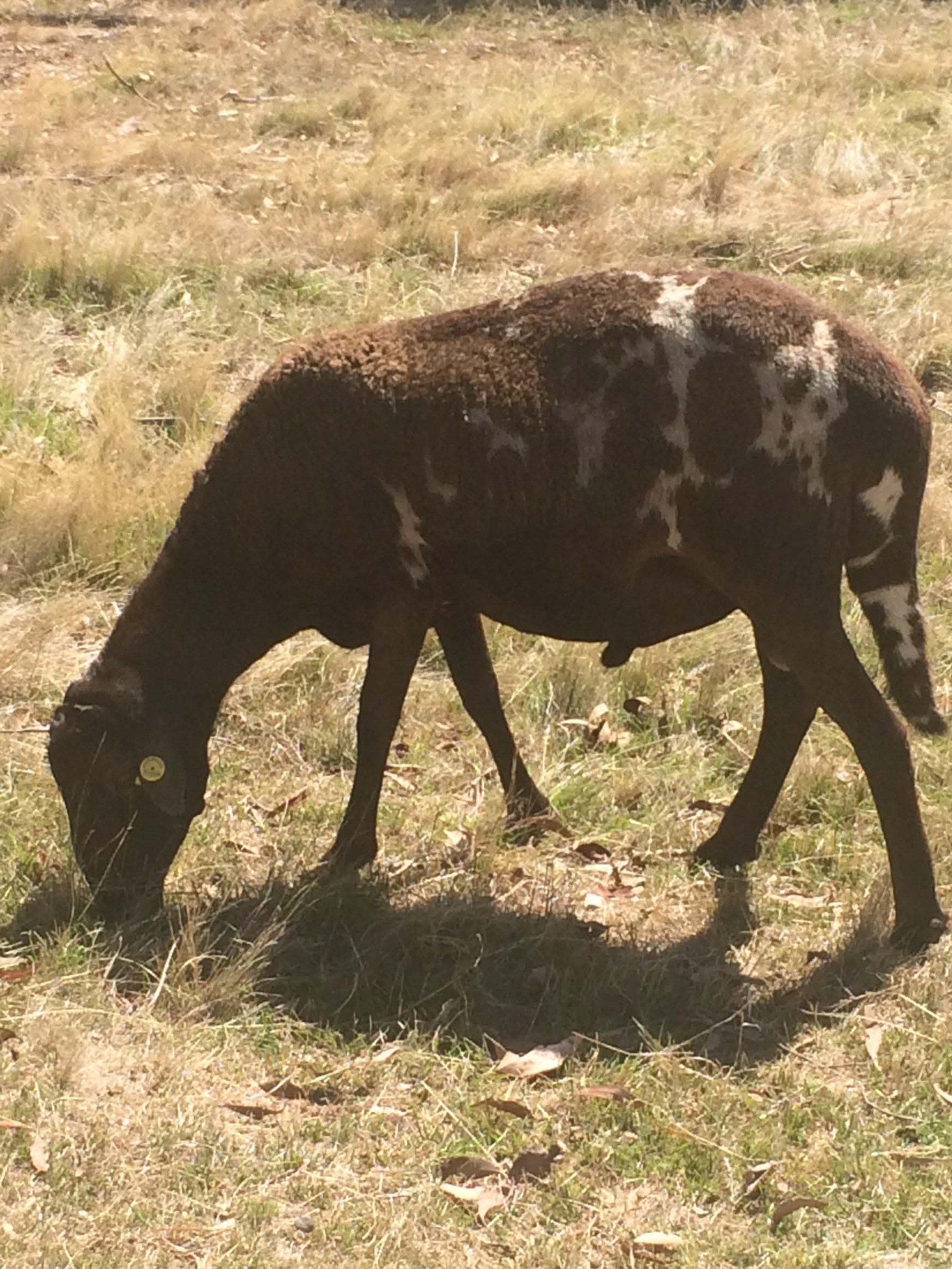DAMARA HISTORY
The Damara originated from the Hamites of Eastern Asia and Egypt and moved down to the present day Namibia and Angola. For many years, the sheep were in an isolated region of Namibia and thus remained free of influence from other breeds. Damara sheep can survive in a harsh environment and under poor nutritional conditions. They were introduced to Australia from South Africa in 1996.
Damara are a self shedding breed of sheep that look remarkably like goats however they do stand out in the crowd due to their fat tails. They are very colourful and a delight to watch, particularly when they are in the paddock right in front of the house. Research has indicated that some 60% of the diet of the Damara sheep can consist of browsing material. This places the Damara in the same feeding category as goats. Hair is mostly short with a tendency to a fine layer of woolliness developing under the hair during winter. The sheep has a wide range of colors which are all equally acceptable and desirable. With the exception of the tail and the rear rump, there is no visible localized fat. Therefore they are bred for their meat which has a very low fat content as all their fat is stored in that fat tail so very healthy eating. They do not have wool and do not require shearing like most other breeds and as a result there is virtually zero issues with fly strike to contend with; they are covered with a goat like hair that they shed up against our fences and trees by rubbing it off as summer approaches.
Damara are a very low maintenance breed but we need to stress not a no maintenance breed. They do require drenching for worms from time to time and their lambs require protection from foxes and a keen eye needs to be kept watching for any other ailments that, although rare, may occur. Our drenching process is minimal as we have a rigorous regime of paddock rotation ensuring cleanliness.
The mob is very much inter dependent - find one and you find them all and if they are seperated serious panic is experienced until the mob can be joined again so you would never separate a single sheep. Our mob love their sheep nuts and regularly receive a few handfulls. This results in making them very easy to manage - as soon as they see see us they come running and follow us anywhere. Certainly beats any other method of movement management.


